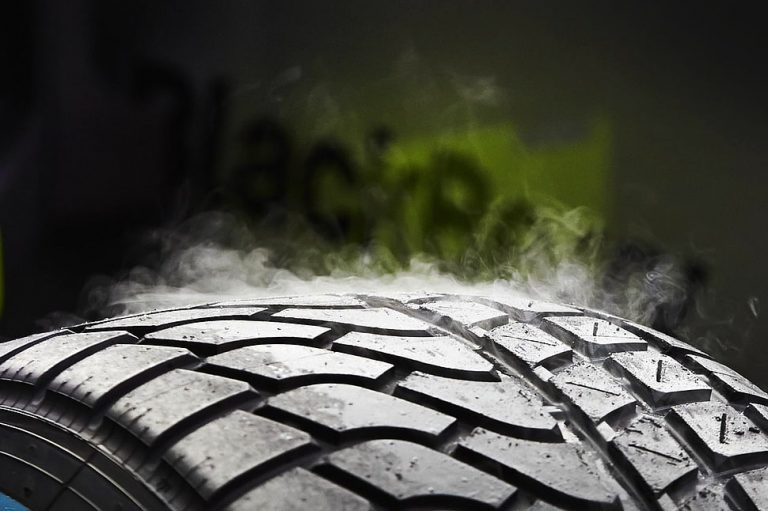Did you know that tyres have a five-year product liability warranty expiry date? “Most vehicle owners probably don’t know this fact and wouldn’t even consider it to be an issue,” says Hedley Judd, national director of the Tyre, Equipment and Parts Association (TEPA) a proud association of the Retail Motor Industry Organisation (RMI). This warranty is from the manufacturer that warrants that the tyre (product) in its un-used form is safe from manufacturing defects during the 5-year period from date of manufacture.
He says it’s important that consumers are aware of what they are purchasing when it comes to tyres since it is a costly but essential purchase. “By asking the right questions and understanding what you should be looking for there’s less chance you’ll be duped into buying a compromised part.” A tyre in an un-used (un-fitted condition) that has been correctly stored during the time up to fitment can, and will, last longer than the 5 years, however the manufacturer’s warranty does not extend beyond the 5-year time frame.
Judd says while this is not a major issue in the industry, in an attempt to clamp down on it, TEPA has, and continues to engage with, the relevant government agencies and departments, with a view to reducing the potential for sub-standard used, old and out-of-date products reaching the market. “TEPA is committed to the promotion of road safety and environmental sustainability, and as such is continuously active in these fields,” he says.
To prevent being duped, Judd says your safest bet is to always use a reputable dealer and not the roadside tyre dealers. All TEPA accredited members for example are required to participate in a fair, honest, and equitable manner with all customers and suppliers. “Should you believe you have been sold a tyre post the five-year warranty expiry mark, the first option is to approach the dealer. If you can’t resolve the issue, the next step is to approach the RMI/TEPA for assistance in the negotiation.” He warns, however, the evidence needed is the dated invoice of the sale of the tyre and the tyre manufacturing date code. “Failure to produce such an invoice will render any potential claim extremely difficult to prove. This makes it very difficult for customers who may have purchased second hand tyres that were already beyond the five-year warranty expiry period without any paperwork. Sadly the latter is the more common problem.”
The age of a tyre can be determined by looking at the side wall of the tyre for the following markings:
DOT U2LL LMLR 5107
51 Manufactured during the 51st week of the year
07 Manufactured during 2007
In South Africa second-hand tyres may only be imported for re-treading purposes. The selling of imported second-hand/part-worn tyres in South Africa remains illegal. The incidence of the illegal sale of imported used tyres has exploded in recent years, with more and more second-hand dealers springing up. Judd says consumers need to be wary when considering these dealers as not only is there zero quality control of the tyres for sale, but the tyre may well be unsafe to use and is never checked properly. The running-cost calculation of second-hand tyres always works out to be more expensive than new tyres.
“Prudence would not see a legitimate tyre dealer selling tyres after the five-year warranty expiry date, unless there is a valid reason to do so,” he says. “The most important issue surrounding tyre age is the manner of storage of the tyres. So, while a tyre may look to be in good condition, it may in fact have internal aging which is not always evident.”
Judd says where tyres have been kept in a cool environment indoors and out of direct sunlight, the aging is limited to the tyres being correctly rotated on the shelf to limit polymer memory in the shape of the tyre occurring in the rubber compound. The danger comes about when the opposite occurs where a tyre has been subjected to high temperatures, direct sunlight and left in one position for an extended period of time.
“If you notice your tyres have reached the five-year mark, the best course of action would be to visit a specialist and have the condition of the tyres assessed. The dealer may see safety critical issues with the tyres that you may have overlooked. In the event of a report of visible aging, there should be no hesitation in replacing the tyres immediately. Ensuring that tyres are replaced as axle pairs i.e. two at a time minimum, the best tyres are always fitted to the rear of the vehicle and not to the front as is often thought,” explains Judd.
Ensuring tyres are in good condition needs to be a priority for all drivers. “It’s not worth skimping or trying to cut corners when it comes to tyres. Many of the deaths on our roads are related to tyres malfunctioning and accidents happening. Speak to the experts and stay away from any unscrupulous dealers,” he concludes.



